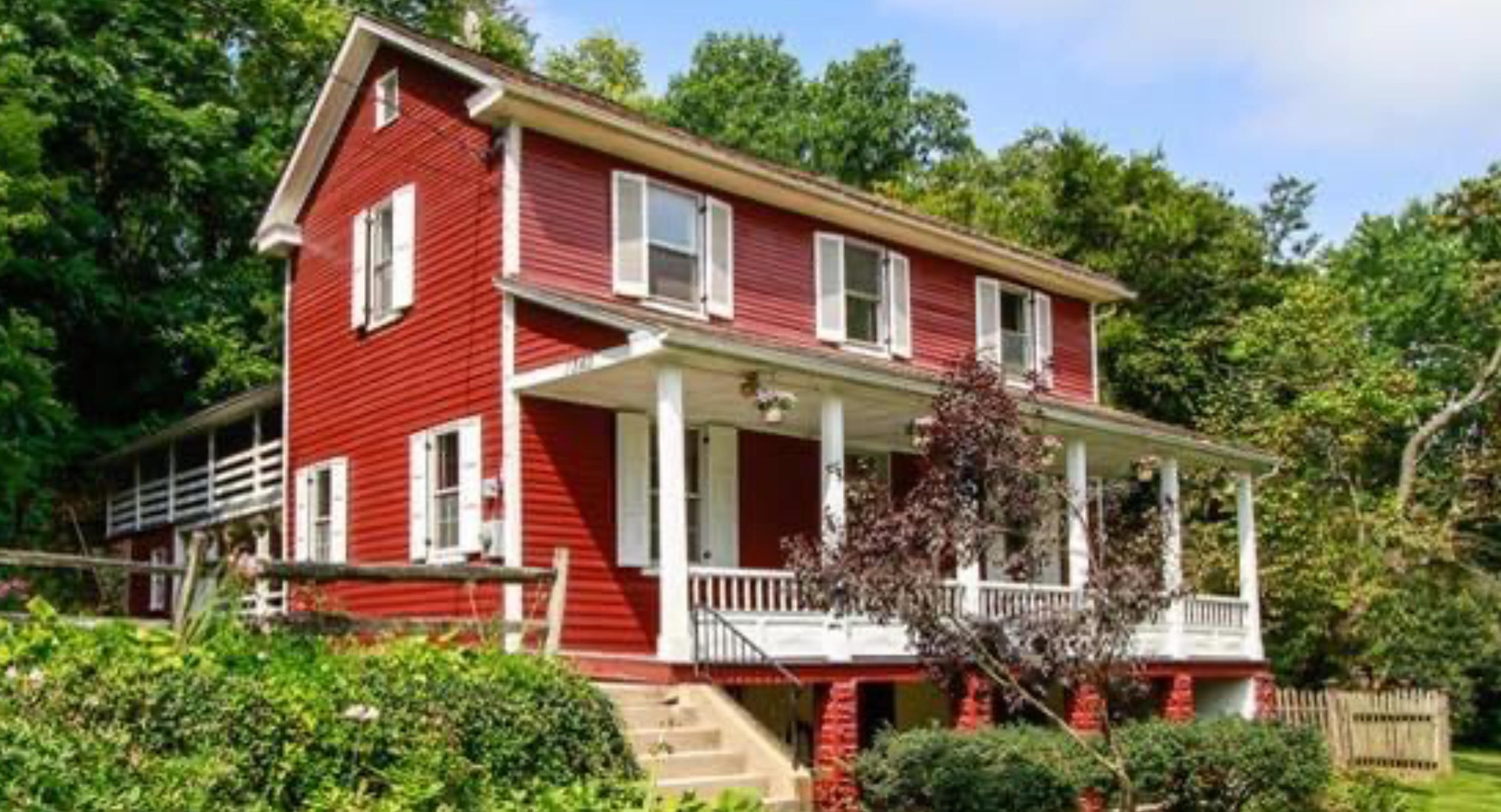Bruceville
David Buie
(12/2021) Those of you who recognize the name Bruceville may have traveled down Bruceville Road, near Taneytown. In the past, Bruceville Rd was the bustling village founded by Norman (a.k.a. Normand, Normon) Bruce. A vital element of the town's significance stems from its association with two highly influential Carroll County families, the Bruce's and the Key's.
These families were instrumental in founding the community. In addition, these families contributed significantly to county, state, and national histories. This article contains much information from two pieces. One was published in The Carroll Record during its inaugural months in 1894 by E.H. Sharretts concerning Bruceville's history and another published by the Carroll County Historical Society, "The Carroll Record Histories of Northwestern Carroll County Communities."
Norman Bruce, the founder of Bruceville, built Myrtle Hill. It is significant for its architectural components - the large stone and frame house, the stone meat house, and the remains of the single large span stone arch bridge that connected it to "Good Intent" on the north side of Big Pipe Creek from within the town of Bruceville.
There are many important links between Bruceville and Keymar, which feature the original settlers and founders of Bruceville. Early records indicate that Bruce immigrated to the United States from Scotland in 1762 and settled on Pipe Creek. In 1763, Bruce and Diggs received five thousand, three hundred and one acres, extending from Keysville along Big Pipe Creek north of Bruceville. The region was known as "Bedford."
The land south of the creek belonged to John Ross Key (1754-1821). Bruce desired the Key property for erecting a mill on the Big Pipe Creek; thus, he entered negotiations with Key, resulting in their estates' exchange.
In 1758, Norman Bruce married Susanna Gardner Key (1742-1811), the daughter of Philip Barton Key (1757-1815). Phillip Key had six children, the third; John Ross Key was the father of Francis Scott Key (1779-1843). Susanne received 1,400 acres of land, one-third of "Terra Rubra." Bruce would acquire land throughout his life, accumulating 14,089 acres in total. In the late 1800s, Norman Bruce built "Myrtle Hill" as the centerpiece of a large estate, including at least one mill, housing many additional structures.
Norman and Susanna had five children: Betsy, who was born before 1761 and possibly died infancy, Andrew (1761-1814), Upton Scott (1762-1829), who settled near Cumberland on land called the Glades; Charles Key (1764-1826) who according to Mimi Ashcraft of the Historical Society of Carroll County, "went to Scotland and studied medicine, sailed to India where he spent many years as a newspaper editor.
When Normand died in the early 1800s, in order to lay claim to his share of the property, Charles returned from India and lived the rest of his life on Long Island"; Elizabeth Key (1772-1862), a beautiful girl who attended the assembly balls when her father represented his county in the Legislature in 1778. The dresses she wore are still preserved, together with china bearing the Bruce coat of arms. She married John Scott, the nephew of Dr. Upton Scott of Annapolis.
After John Scott married Norman Bruce's daughter, Elizabeth Bruce, John Scott built the large stone house on the Hill naming it, "Good Intent. "Good Intent" was made about the year 1812 and cost ten thousand dollars. John and Elizabeth had five children. Upton Scott, Susanna, who died in infancy, Mrs. John Brooke Boyle of Westminster, Mrs. Daniel Swope, and Dr. Norman B. Scott still survive. John Scott died of sciatic rheumatism, February 28, 1841. Elizabeth Bruce Scott, his wife, died in 1864 in Westminster, aged 84 years. After Bruce exchanged property with Key, he built a dwelling house passed and occupied by Frederick Mehring and his sisters. He also erected a large stone mill, owned later by George Mehring, which stood until 1881 when it was destroyed by fire.

It is clear from his diverse interests and skills as a farmer, miller, Revolutionary War officer, sheriff, and judge that he had the knowledge and skills required by early colonists. However, Bruce's financial condition became problematic toward the end of his life due to the country's economic conditions. In the aftermath of his death, the "Myrtle Hill" became a tavern. Eventually, it was owned by the Mehring family, which transformed it into a centralized mining town.
Today, a look at "Myrtle Hill" reveals that its architectural form and individual features represent a historical resource for learning about life and culture during the Revolutionary War.
David Buie is a Taneytown Resident who has a passion for
Carroll County and its place in history.
Read
other history articles by David Buie
Read other articles on Taneytown history